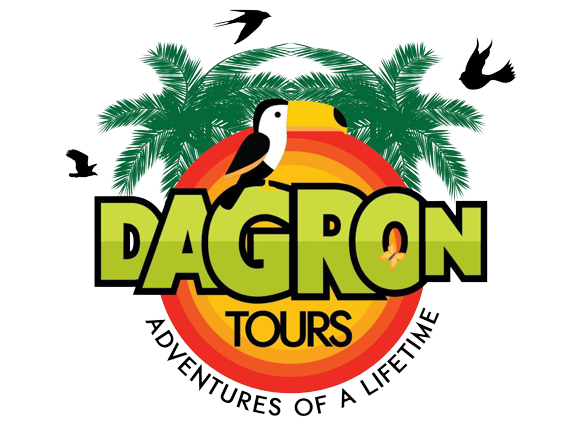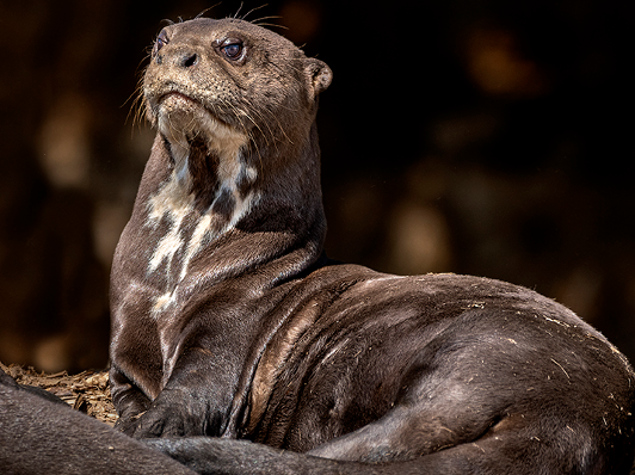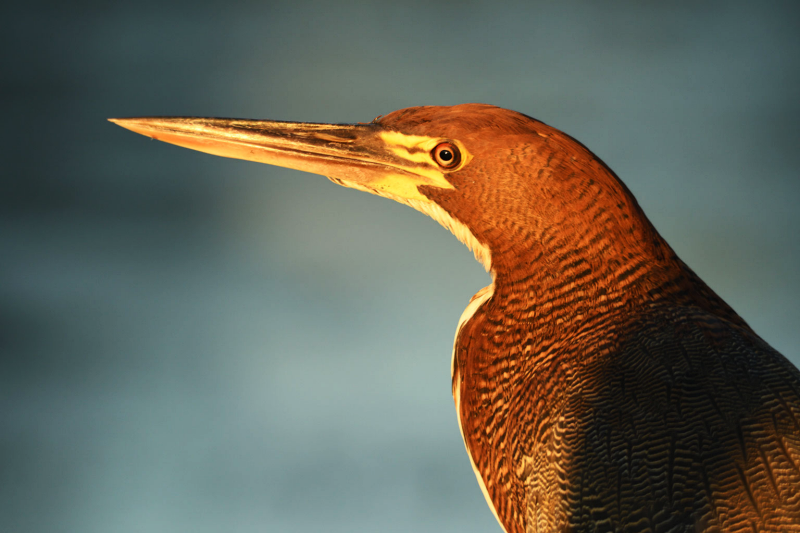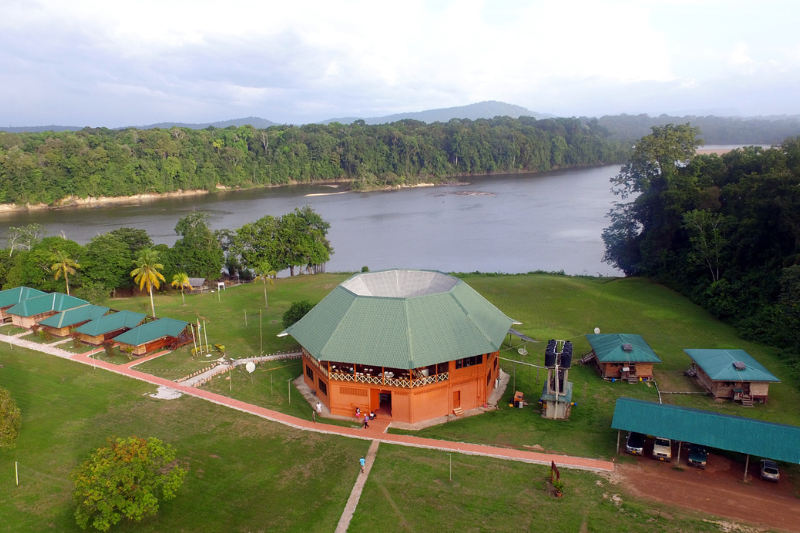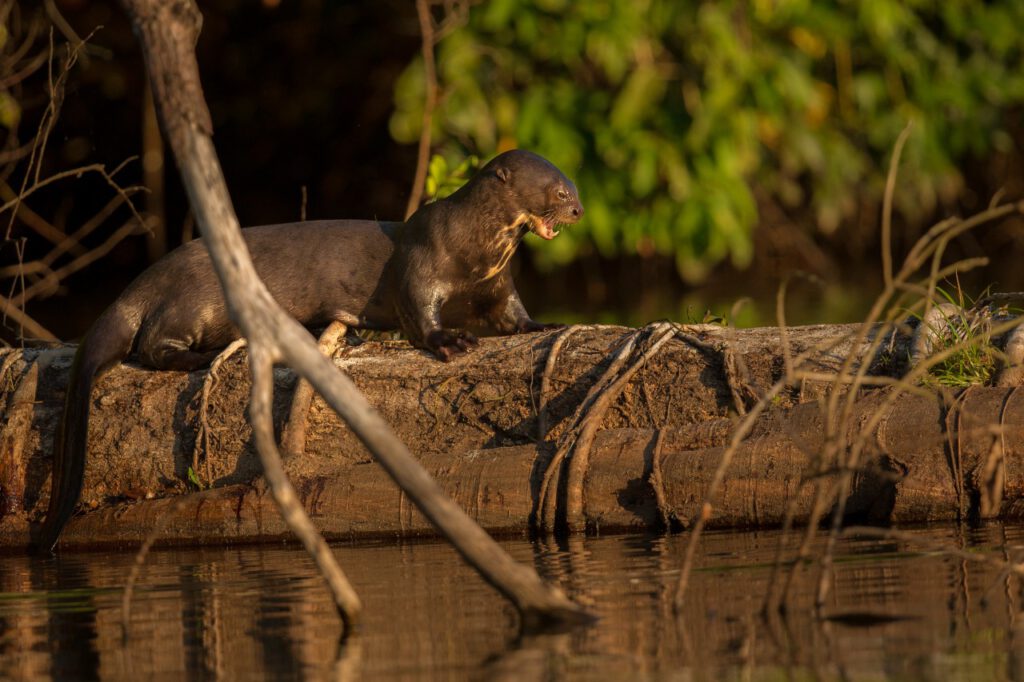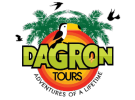- Overview
- Trip Outline
- Trip Includes
- Trip Excludes
- Gallery
- Booking
- FAQ
Join us on this Wildlife Adventure, an unforgettable journey of discovery, excitement, and awe-inspiring experiences through Guyana's interiors. With local guides and trackers, you will explore:
- The Iwokkrama Rainforest - home to Guyana's most diverse flora and fauna
- Takatu Orchid Gardens - A family estate where you can see orchids, butterflies, and wildlife
- Kaieteur Falls - one of the world's tallest waterfalls
- Potaro River- a unique ecosystem with abundant wildlife
Wildlife Adventure is an unforgettable journey of discovery, excitement, and awe-inspiring experiences through Guyana's interiors. With local guides and trackers, you will explore:
The Iwokkrama Rainforest - home to Guyana's most diverse flora and fauna
Takatu Orchid Gardens - A family estate where you can see orchids, butterflies, and wildlife
Kaieteur Falls - one of the world's tallest waterfalls
Potaro River- a unique ecosystem with abundant wildlife
Itineraries
Day 1
Arrive Guyana
Arrive in Guyana. Pick up and transfer to Georgetown and your hotel.
If you're a birder and arrive during the day, we will offer a botanical gardens birding tour.
Visit the Botanical Gardens in the afternoon for blood-coloured woodpeckers, white-bellied piculet, and festive parrots such as Snail Kites, Limpkins and Donacobius.
You can find parrots, Festive, macaws, Red-bellied and Red-shouldered, Black-crested Antshrike, White-bellied, and many more species.
Alternatively, you can spend the afternoon at leisure.
Overnight at Sleep Inn International Hotel or similar
Day 2
First Leg to Kaieteur
At 6:30 a.m., our guide will pick you up from your hotel, where you will embark on an overland journey passing through Linden - a mining town and continue along a dusty road to Mabura Hills and Konawaruk.
The short drive from Madhia to Pamela's landing stage on the Potaro River will be your last comfort travel for a few days.
By boat, you travel upstream, arriving near Amatuk Falls, where you can set up camp in the jungle.
Take a quick dip in refreshing river water accompanied by the sound of water gushing down the falls.
Enjoy bush-cooked meals. (Meals: breakfast, lunch, dinner)
Overnight at jungle camps with hammocks
Day 3
Trekking and Camping
After breakfast, change to another boat above the falls to continue your river journey through the Kaieteur Gorge, where steep slopes rise on either side to 2,000 feet (609 meters).
Some of the bare rock faces resemble ancient temples. The boat will drop you off at a point where you will continue hiking to the camp at Tukeit.
On the way to Tukeit, visit a beautiful waterfall to enjoy a comfortable swim before arriving at the bottom of Kaieteur Falls.
Set up camp and enjoy the wonderful jungle setting with bush-cooked meals.
(Meals: breakfast, lunch, dinner)
Overnight at jungle camps with hammocks
Day 4
Kaieteur Falls
From Tukiet, climb to the top of Kaieteur Falls; a four-hour hike winds through mountains and streams to the final stage known as "Oh My God" because of its steep ascent.
On reaching the top, you will experience awe-inspiring views as you catch your first glimpse of the mighty Kaieteur Falls.
At dusk, clouds of thousands of swifts gather before plunging into the water of the falls to their rocky nesting sites behind the wall of water.
(Meals: breakfast, lunch, dinner)
Overnight at Kaieteur Guest House
Day 5
Return to Georgetown
Early morning mist gives way to a fantastic view of the Falls from Johnson View.
You can see Golden frogs in giant bromeliads, where they spend their entire lives from tadpole to maturity.
In the afternoon, fly back to Georgetown by aeroplane. You will be transferred to a hotel overnight.
(Meals: breakfast, lunch)
Overnight at Sleep Inn International Hotel or similar
Day 6
Karanambu Lodge
Depart at dawn from Surama, drive to Ginep landing, and journey by boat to Karanambu.
Upon arrival at Karanambu Lodge, a representative will meet and guide you to your lodge. Karanumbu Ranch nestles between the rainforest and savannah. A perfect combination of nature.
Typically there are two excursions each day — one early in the morning, the other late in the afternoon, and one into the evening.
As well as being the most incredible times to be out, these are usually the best times to see the different birds and animals.
Trips may be on the river by boat, on the savannahs by Land Rover or along forest trails on foot to the other ponds. Activities usually include:
- Searching for wild otters along the river and among the ponds.
- Tracking a giant anteater across the savannah.
- Sipping rum punch while watching the giant Victoria Amazonica lily blossom before your eyes.
- Boating through the flooded forest in the wet season.
- Enjoy flora and fauna along the walking trails among the forest ponds.
- Spot all sorts of amazing animals when they come out of hiding at night.
Many species of birds can be observed along nearby rivers and oxbow lakes, such as Capuchinbirds, Striped Woodcreeper, Pale-bellied Tyrant-Manakin, Slate-headed Tody-Flycatcher, Bearded Tachuri, Bicolored Wren, and White-tailed Goldenthroat.
As we go along the rivers, we can observe Jabiru, Rufescent Tiger-Heron, Ringed and Amazon Kingfishers, Purple Gallinule, Agami Heron, Wattled Jacanas walking on water lilies.
In the late afternoon, you’ll most likely see Lesser Razor-billed Curassow, Sunbittern, Black-chinned Antbird, and Boat-billed Heron. (Meals: breakfast, lunch, dinner)
Overnight at Karanambu Lodge
Day 7
Karanambu Lodge
This morning we may make an early start to reach an area of rolling grasslands home to a population of giant anteaters.
With luck, we shall locate one of these six-foot-long animals excavating its breakfast from one of the red termite mounds that stud the savannah.
The giant anteater, also known as the ant bear, is a large insectivorous mammal native to Central and South America.
It is recognizable by its elongated snout, bushy tail, long foreclaws and distinctively coloured pelage [fur, hair or wool of a mammal].
Anteaters feed primarily on ants and termites, using their foreclaws to dig them up and their long, sticky tongue to collect them.
In addition, you’ll look for black and spectacled caiman, giant river otter, and many species of monkeys.
In the afternoon, you will travel on the Rupununi River to Simony Lake, where you are likely to find Green- and Rufous-Kingfisher, Bare-necked Fruitcrow and Spot-breasted Woodpecker.
(Meals: breakfast, lunch, dinner Overnight at Karanambu Lodge )
Overnight at Karanambu Lodge
Day 8
Boat and Drive to Surama
This morning you'll bird around Karanmabu Lodge. After that, you will take a boat to Ginep landing and then a 4x4 to the Macushi Amerindian village of Surama.
Finally, you'll visit the Mori Scrub, where we will see Black Manakin and Rufous-crowned Elaenia, along with Cinnamon Attila, species of birds unique to this kind of habitat.
Upon arrival in Surama, receive a welcome from a village councillor and have a refreshing snack. Next, we will discuss your itinerary to confirm any changes.
Then you'll have time to settle into your accommodation and learn about the eco-lodge grounds. Next, your guide will take you on a village tour to visit the local school, medical centre, church, and some village houses before lunch.
This tour involves approximately 1.8 miles (3 kilometres) of walking. As the afternoon cools, your guide will take you for a short walk on the Marabunta trails to observe the forest and bird life.
Enjoy an educational walk to observe wildlife and experience the forest's mystique after dark.
Overnight at Surama Eco-Lodge
(Meals: Lunch, Dinner)
Day 9
Camping at Carahaa Landing Camp
Rise before dawn for a walk across the savannah and then take a challenging climb up Surama Mountain in the cool morning air.
It Is the best time to observe bird life along the trail. Then, enjoy a delicious breakfast with incredible views across the village and savannah to the Pakaraima Mountains.
The tour is approximately 3.1 miles (5 kilometres) roundtrip. After returning to the lodge for an early lunch and a 1-hour siesta, take a walk or transfer across the savannah and through the rainforest to the Burro-Burro River.
(Meals: Breakfast, Lunch, Dinner)
Overnight in a hammock at the Carahaa Landing Camp
Day 10
Iwokrama Rainforest
At Dawn, depart Surama Eco Lodge and transfer by 4x4 to Iwokrama. These are the best times to go out because there are different birds and animals.
Iwokrama is one million-acre reserve established in 1996 under a joint mandate from the government of Guyana and the Commonwealth Secretariat to manage the Iwokrama forest "in a manner that will lead to lasting ecological, economic and social benefits to the people of Guyana and the world in general".
Iwokrama is a research centre and eco-tourism destination; it is also in transit between lodges along the trail, where we may spot capuchin Monkeys, red-ramped agouti, and red brocket deer and Guyana's monitor lizard.
We may spot various bird species such as Cocoi and Capped Herons, Black Skimmer, Pied Lapwing, Large-billed and Yellow-billed Terns, and Anhinga.
As we walk the nature trails, we may also spot Red-throated Caracara and Gray-winged Trumpeter, Spix's Guan, Collared Trogon, and several woodpeckers, including Chestnut, Golden-collared, Golden-green and Ringed.
Also, Eastern Slaty-Antshrike, Amazonian Antshrike, Rufous-capped Antthrush and Sooty-headed Tyrannulet.
You'll stay at the River Lodge which features comfortable cabins overlooking the Essequibo River.
(Meals: breakfast, lunch, dinner)
Day 11
Iwokrama Rainforest
After an early breakfast, you will leave the Field Station, travel by boat for half an hour to the foot of Turtle Mountain and then commence a stroll up the mountain to its summit at 953 feet (approximately 106 meters).
This mildly challenging stroll takes about 1 to 1 1/2 hours to walk up the mountain, but the effort is more than worth it for the breathtaking views over the forest canopy.
At Turtle Mountain, you will have opportunities to see giant river otters, yellow-headed river monkeys, black spider monkeys, red howlers, capuchin monkeys, coatimundi and white-lipped peccary. Return to the Field Station or River Lodge for Lunch.
After dinner, enjoy a boat tour on the Essequibo River in search of nocturnal wildlife.
Overnight at Iwokrama River Lodge
(Meals: breakfast, lunch, dinner)
Day 12
Fly to Georgetown
Fly to Georgetown and transfer to your hotel.
No details found.
No details found.
No Details Found
